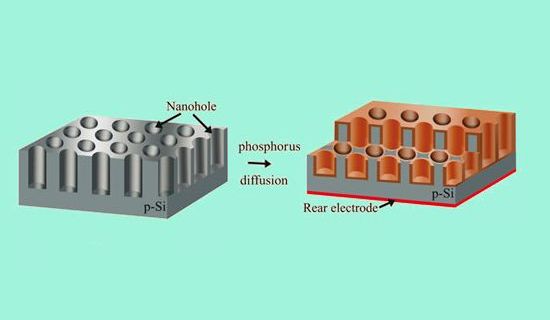
Kui-Qing Peng, a Chinese chemist, and his colleagues from Beijing Normal University and City University of Hong Kong have succeeded in sidelining the brittleness on nanowires that leads to technical hitches during the solar cell fabrication and characterization process. They have created silicon solar cells with arrays of certain nano-sized holes that are flexible enough to withstand common abrasions.
Peng says:
All our present experiments are done in conventional labs, not clean rooms. And this efficiency was achieved with no effort put into efficiency-increasing modifications.
These arrays are less fragile than a mesh of nanowires and they tout better light absorption. The scattered photons are captured within the holes for maximum energy conversion efficiency. The specially developed solar cells can convert about 10 percent of the solar energy into electricity. This capacity can be scaled up to 15 percent.
Via: RSC

